unoXuno: Hugo X. Bastidas: Historical Portraits
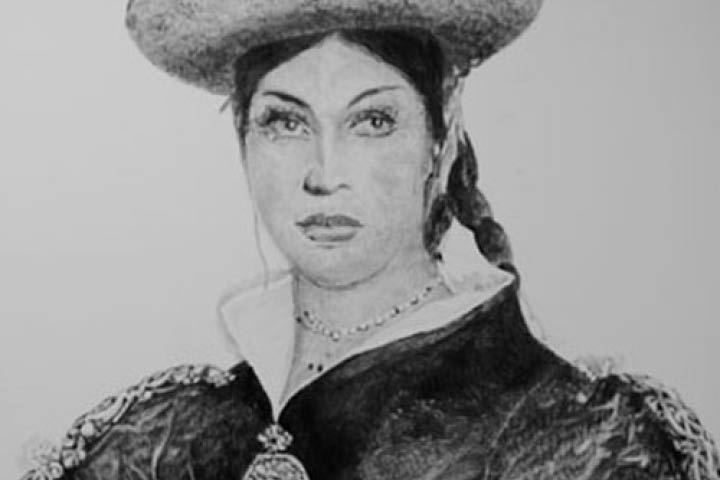
These portraits are about empowerment, equal rights and respect. I am not rewriting history but asking what if there was mutual respect and exchange instead of destruction, subjugation and opposition?
I have had concerns with people being unable, for one reason or another, to participate in our so-called high cultural experience. Art museums, midtown galleries, blue chip galleries, biennials, art fairs, and similar venues have a feeling of exclusivity and not by their own virtue or volition. Regardless of the reason, I felt that if I would reproduce my paintings onto vinyl, I could bring the work out to the neighborhood. Incorporating it into the visual vernacular on storefronts, sides of buildings, interiors, and other unexpected places, it would seem comfortable there and hopefully be appreciated as “ours.” Even if the artworks are copies and temporary, this outreach is in part about some of the same issues I address in my art: inclusion, fairness and liberties that are also concerns of the ordinary people living in neighborhoods across the metro area. – Hugo X. Bastidas
Works by the artist are displayed at various locations in East Harlem. Organized by the artist with El Museo del Barrio and the tireless assistance of Zugeiy Yepez and Suellisse Acevedo. Courtesy of the artist and Nohra Haime Gallery and generously hosted by our El Barrio partners:
Harleys Smoke Shack, 355 East 116th Street, New York, NY, 10029
El Nuevo Caridad, 2257 Second Avenue, New York, N.Y., 10029
Sandy, 2261 Second Avenue, New York, N.Y., 10035
El Tapatio, 209 East 116th Street, New York, N.Y., 10029
La Taqueria Del Barrio, 2327 First Avenue, New York, N.Y., 10035
Guajillo Mexican Kitchen, 2277 First Avenue, New York, N.Y., 10035
El Agave Deli and Grocery, 218 East 116th Street, New York, N.Y., 10029
ELN Corporation, 183 East 111th Street, New York, NY 10029
Pipo’s Mexican Restaurant, 166 East 118th Street #3, New York, NY 10035
Mexico Travel, 238 East 116th Street # 1, New York, NY 10029
Featured image: Detail of Hugo Bastidas, Maria Tallchief, 2015; oil on linen; 60 x 40 in; Courtesy of the Nohra Haime Gallery.
unoxuno is a series of solo projects for contemporary art at El Museo del Barrio. They focus on a single work or installation by a single artist or collaborative group. unoxuno presents the work of local artists in alternative public spaces at the museum, the lobby and El Café, for an entire year. Invited artists are asked to propose a work for these designated areas. Artists featured in the past in this series are COPE2 (b. 1968, South Bronx, New York) and Indie184 (b. 1980, Puerto Rico), Manuel Acevedo (b. 1964, Newark, New Jersey), and Sarah E. Zapata (b. 1988, Corpus Christi, Texas), Joiri Minaya (b. 1990, Santo Domingo, Dominican Republic), Ernest Concepcíon (b. 1978, Manila, Philippines), and Lina Puerta (b. Englewood, New Jersey).
unoxuno: Melissa Calderón
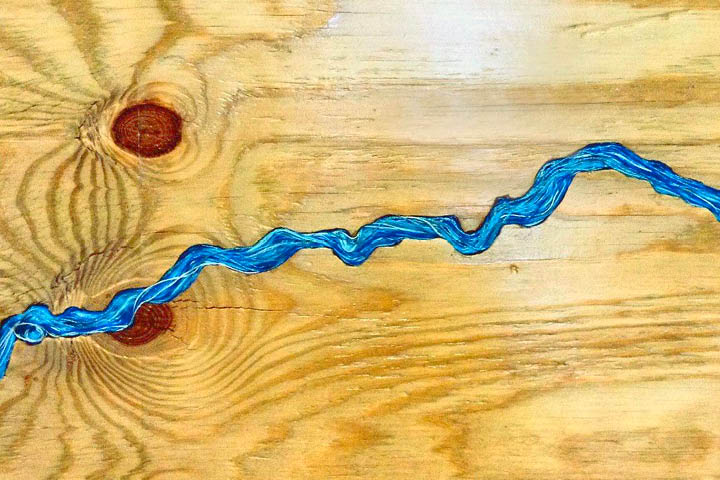
Self taught multimedia artist Melissa Calderón create bodies of conceptual work around themes exploring social and political landscapes; drawing upon historical and philosophical references of power, fragility and perception. She has exhibited her work at El Museo del Barrio, The Bronx Museum of the Arts, The Queens Museum, Socrates Sculpture Park, The Portland Museum of Art, The Schomburg Center for Research in Black Culture, Arsenal de la Puntilla and Galeria 20/20 in Puerto Rico, Art in Odd Places Festival, and SmackMellon among others. She has been included in such books as Frescos, 50 contemporary artists from Puerto Rico, Strange Material: Storytelling through Textile, and EMERGENCY INDEX VOL. 4 ‘s annual performance publication. Currently, she is a recipient of a NYC Percent for Art commission to be permanently installed in the South Bronx and is currently showing work at The Rockefeller Foundation in NYC and The African American Museum in Philadelphia. She is born and bred in the Bronx.
unoxuno is a series of solo projects for contemporary art at El Museo del Barrio. They focus on a single work or installation by a single artist or collaborative group. unoxuno presents the work of local artists in alternative public spaces at the museum, the lobby and El Café, for an entire year. Invited artists are asked to propose a work for these designated areas.
Artists featured in the past in this series are COPE2 (b. 1968, South Bronx, New York) and Indie184 (b. 1980, Puerto Rico), Manuel Acevedo (b. 1964, Newark, New Jersey), and Sarah E. Zapata (b. 1988, Corpus Christi, Texas), Joiri Minaya (b. 1990, Santo Domingo, Dominican Republic), Ernest Concepcíon (b. 1978, Manila, Philippines), and Lina Puerta (b. Englewood, New Jersey)
unoxuno: Miguel Trelles
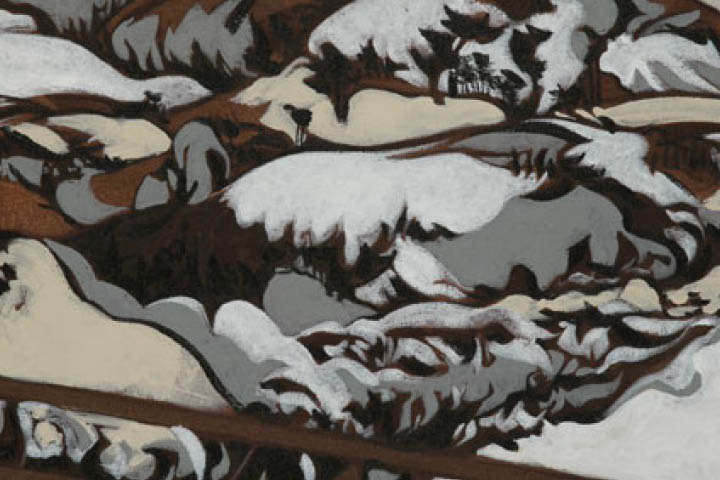
Miguel Trelles is a Puerto Rican painter/printmaker actively engaged since 2006 in curating a yearly visual arts exhibition, Borimix, at the Clemente Soto Velez Cultural and Educational Center on the Lower East Side of Manhattan. Trelles’ own chino-latino painting series recontextualizes classic Chinese painting along with Pre-Columbian and Latin American imagery. An adjunct professor of Studio Art in various colleges in New York sand elsewhere, Trelles holds a B.A. in Art History and Studio Art at Brown University and an M.F.A. (1995) from Hunter College. The work of Miguel Trelles has been exhibited in Rio de Janeiro, Lima, San Juan, Santo Domingo, Havana, Tegucigalpa, Buenos Aires, and Paris, among others. Trelles’ paintings have been acquired by several permanent collections such as those in El Museo del Barrio and Deutsche Bank in New York and in El Museo de Arte de Ponce and the Institue of Puerto Rican Culture in Puerto Rico.
unoxuno is a series of solo projects for contemporary art at El Museo del Barrio. They focus on a single work or installation by a single artist or collaborative group. unoxuno presents the work of local artists in alternative public spaces at the museum, the lobby and El Café, for an entire year. Invited artists are asked to propose a work for these designated areas.
Artists featured in the past in this series are COPE2 (b. 1968, South Bronx, New York) and Indie184 (b. 1980, Puerto Rico), Manuel Acevedo (b. 1964, Newark, New Jersey), and Sarah E. Zapata (b. 1988, Corpus Christi, Texas), Joiri Minaya (b. 1990, Santo Domingo, Dominican Republic), Ernest Concepcíon (b. 1978, Manila, Philippines), and Lina Puerta (b. Englewood, New Jersey).
a glyph, a tool, an icon: Beatríz Santiago Muñoz selects from El Museo’s Collections
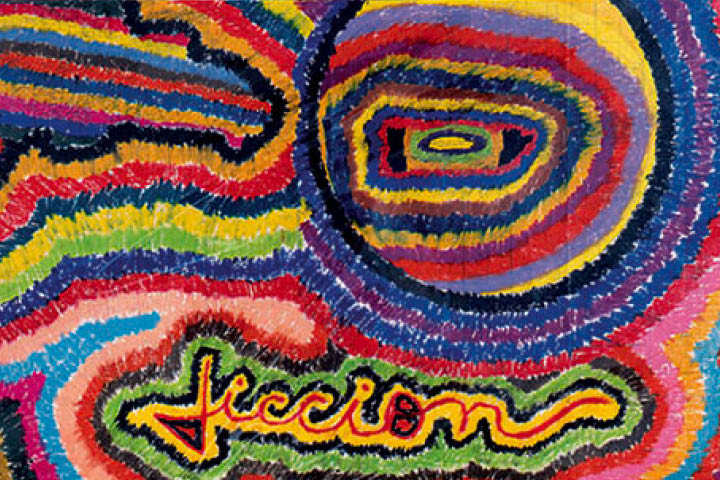
El Museo has invited the featured artist, Beatriz Santiago Muñoz, to mine El Museo’s collections of over 8,000 objects to select works that connect to her ideas, her films, her way of working and other narratives of symbolic importance.
She notes: Some of this work, such as the early films of Raphael Montañez Ortiz or the sculpture of Marcos Dimas, follows a line of thought from material and formal experimentation to mystical thought or vice-versa. Others look at the ways in which a place and a body is marked, mapped and drawn; from pipelines to petroglyphs. There are prints, mostly from the 70s and early 80s that play with simple icons: star, island map, scarab. They seem to me to be drawn from a language of abstraction that is a lot older and deeper than the 20th century.
Recently, I have made films that deal with the fraught relationship of politics to aesthetics and about the unspectacular nature of freedom, with Carlos Irizarry and Elizam Escobar respectively. Their work in the collection is very different from each other—one is the deeply personal work of the artist while in prison while the other’s raw material is the mediated political image.
Finally, there are the carved and shaped Taíno objects: spheres, petal-shaped hand axes, a cosmic twin amulet, pestles and phallic objects. We have no certainty about their use or their meaning, and yet we can hold them and wonder about the process of making them. Through the objects we may tenuously hold in our mind the metaphysics that gave birth to them.
El Museo del Barrio’s Women Artists Retrospective Series
In recognizing the historical exclusion of women from the art professions, which has directly contributed to an international museum culture predisposed to male artists, El Museo del Barrio is resolved to challenge this gender bias, within our means and within our walls, by organizing a retrospective or major survey of works by outstanding women artists—one in each fiscal year.
The surveys will span decades of an artist’s career, occupy the majority of the gallery space in the museum, and be accompanied by public programs and a book publication with new scholarship that positions and conveys the import of the artist’s contributions to the field.
HOMENAJE: The Traveling Exhibit Honoring Our Puerto Rican and Nuyorican Heroes
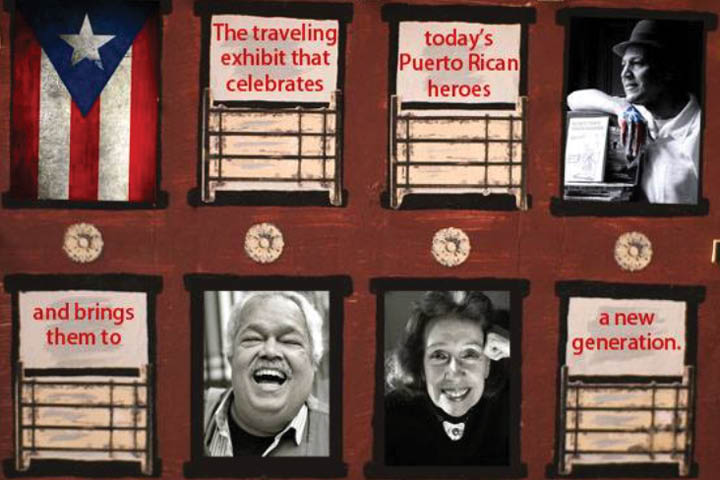
The driving force behind the photo series is to celebrate the contributions of our living heroes in our communities and highlight the work they have done to build the figurative and literal roads and bridges for others within the Puerto Rican community who have come after them.
The exhibit pays tribute to our Puerto Rican leaders and our voices. It recognizes our heroes and introduces them to a younger generation of Puerto Ricans. Instead of requiring them to travel to a gallery, the exhibit, itself, travels from Puerto Rican neighborhood to Puerto Rican neighborhood—right to the very places where Puerto Rican and Nuyorican people eat, sleep, work, socialize, shop and rest. Each poster features a black and white portrait of a hero aged 50 and older, and tells a loosely biographical story that reveals each hero’s unique personality and idiosyncrasies.
The posters are strung together in different configurations using clotheslines and clothespins—reminiscent of how clothes were dried from tenement windows and how clothes are still dried in many places in Puerto Rico. Who would have thought that those hand-me-downs and holey socks and tattered clothes hanging from those tenement windows in the 40s, 50s and 60s in those poor, immigrant communities would be the first items of clothing worn by today’s activists and poets, leaders and CEOs, doctors and opera singers, artists and community organizers, scientists and US Supreme Court justices?
Since October of 2014, HOMENAJE has traveled every two to four weeks from bodegas to senior centers to restaurants to local schools to community centers to dance studios to health care centers all across the city and has been exhibited in historical venues such as the Nuyorican Poets Café and the Puerto Rican Traveling Theater.
Navideño: Three Kings and Nativities from El Museo’s Permanent Collection
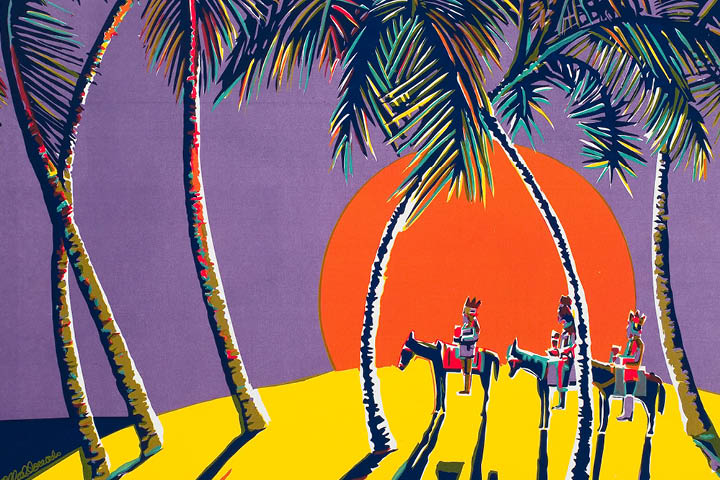
This special exhibition will lead to and coincide with one of the most important popular traditions in many Puerto Rican and Latin American cultures, Three Kings Day, celebrated on January 6. Since 1978, El Museo del Barrio has commemorated Día de los Tres Reyes by organizing a community parade through East Harlem. This exhibition highlights some of the Three Kings and Nativity-related objects from El Museo’s permanent collection. A group of delicate wood-carvings by Puerto Rico’s santeros, depicting The Three Kings, are juxtaposed with Nativity scenes from various Latin American countries. Objects like these are typically displayed in the homes of those who celebrate the tradition, from December 6 to the Epiphany, or Three Kings Day. Accompanying these objects are traditional holiday posters by artists Antonio Maldonado and Lorenzo Homar. Also featured is a painting on the Three Kings theme by artist Scherezade García, introducing a contemporary version of this historic iconography.
This display is organized in honor of Carmen Ana and Joseph Unanue, friends and benefactors of El Museo del Barrio.
#CarvingThroughBorders | CultureStrike
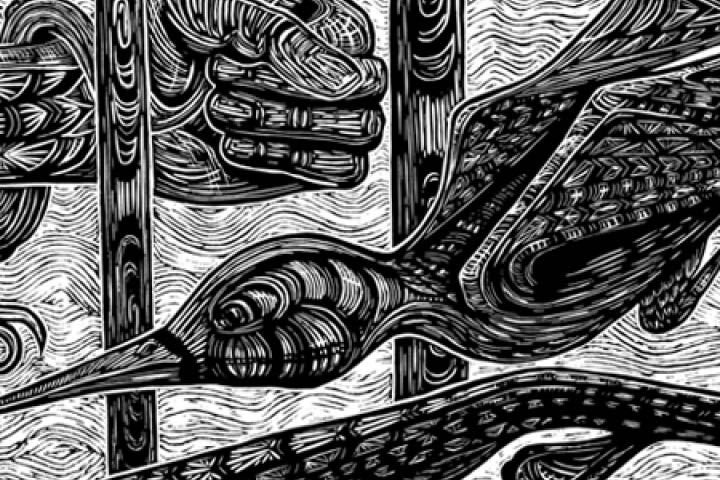
CarvingThroughBorders emphasizes sharing skills and creating collaborative artistic work via oversize block prints that give life to migrants’ diverse experiences.
The project draws inspiration from historic graphic campaigns that shed light on the humanity of everyday people whose stories are too-often unseen and unheard. The works are a part of a collection of 13 oversized woodblock prints with pro‐migrant messaging commissioned by CultureStrike. Undocumented and documented artists from the San Francisco Bay Area, Los Angeles, New York and Florida were asked to illustrate various aspects of migration with a local, national or worldwide scope: detention, deportation, displacement, discrimination, exploitation, violence, youth, criminalization, legalization, and economic and ecological brutality wherever and however it occurs.
The first edition of prints was done with a steamroller on fabric by Master Printers from Syracuse University during the 42nd annual Southern Graphic Council Conference in San Francisco on March 29, 2014. The second edition of prints, shown here at El Museo Del Barrio, was printed on Sekishu paper at Favianna Rodriguez’s West Oakland studio by printmaster Nichol Markowitz.
ABOUT CULTURESTRIKE
CultureStrike works toward a society that recognizes and embraces migration and the migrant experience. We harness the power of culture to organize artists, writers and other culture makers to transform public views and sentiment around migration, and to fight for equity and full inclusion of migrants and their communities in the United States’ social fabric. For more on CultureStrike, visit the website, here.
Sarah Zapata: Siempre X
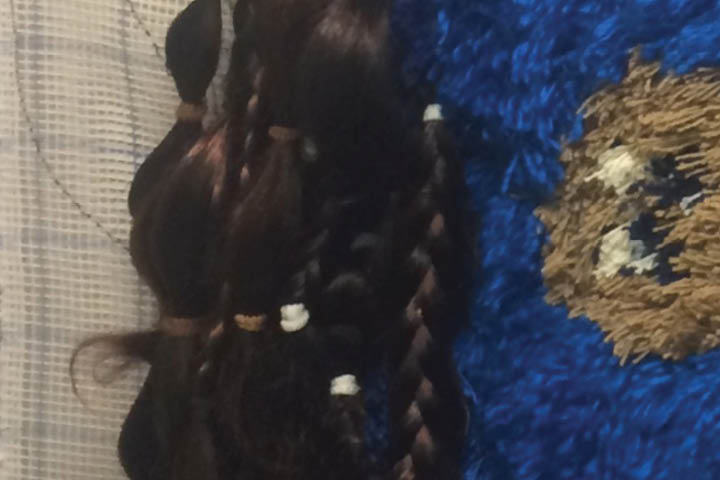
As part of its ongoing ARTE NUEVO series, El Museo del Barrio invites artists to propose unique, site-specific works for its large wall in El Café. In this case, sculptor and textile artist Sarah Zapata spent several weeks in Peru studying indigenous textile design and techniques, which she incorporated into this large work. The artist is interested in the intersection of popular and traditional cultures as well as in a mix of natural and fabricated materials. She has also been deeply inspired by ariplleras, hand-sewn narrative works that were made in Chile during the Pinochet dictatorship and also throughout the guerilla occupation in Peru. Made almost exclusively by women, these were an important political tool, sometimes the only way that information about the violence and repression could be disseminated to other countries. The artist adapts these hand-made techniques and ideas to a monumental scale and incorporates plastic elements that are reminiscent of pop culture imagery.
OFFICE HOURS (OH)
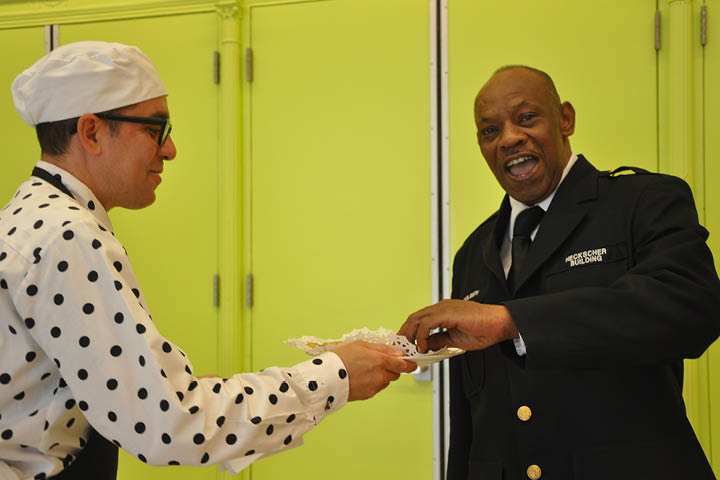
“Office Hours (OH)” comprises a series of actions spread throughout El Museo del Barrio’s facilities, for which artist Nicolás Dumit Estévez invites the various departments of the organization to operate on a horizontal level within its own exhibition space. Estévez works with El Museo del Barrio’s employees to co-generate proposals for interventions, workshops, and celebrations, through which both staff and visitors can come together to experience the museum from each other’s perspectives and hence to re-shape its day-to-day as a collaborative endeavor.
“OH” brings face to face the concepts of creativity versus productivity, as El Museo del Barrio’s curators, administrators, guards, educators, operations personnel, finance employees, audiences, and artists are encouraged to work as play or to play as work – all of this as part of an the on-going performing of the day-to-day. “OH” conceives of El Museo as a holistic work of art; that is, a living artwork existing beyond the boundaries of the exhibition space and comingling with life.
An evolving project, OH currently encompasses the following actions: En Familia; Friends of Friends; Over the Table; El Museo as Classroom; Back in Five Minutes; and Creative Disruptions.
To see full project, please click here.
Voces y Visiones: Gran Caribe

Drawn from El Museo del Barrio’s wide-ranging permanent collection, this exhibition features works that explore the vast diversity and complexity of the Caribbean basin and contribute a dialogue to the exhibition, Caribbean: Crossroads of the World (June 12, 2012-January 8, 2013). In collaboration with Studio Museum in Harlem and Queens Museum of Art, El Museo del Barrio will present its ground-breaking Caribbean exhibition, which explores the art, culture and history of the region from the time of the Haitian Revolution (c. 1791) to the present. This installation of permanent collection objects takes a narrative approach to some of the themes developed in the larger exhibition, exploring the connections between personal experiences and visual expressions. These artworks are a reflection of the human condition: movement from one place to another, creating epic narratives from personal stories, sharing one’s love for a lost homeland. As the title implies, the islands, the coastlines and the waters that unite them are all part of this study.
PARTICIPATING ARTISTS
Gustavo Acosta (b. Havana, Cuba 1958); Juan Alindato (b. Ponce, Puerto Rico 1921; d. 2010); Alexandre Arrechea (b. Trinidad, Cuba 1970; lives in Madrid); Charles Biasiny-Rivera (b. Bronx, New York 1930; lives in New York); Angel Botello (b. Spain 1913; d. Puerto Rico 1986); Jonathan Brand (b. Bennington, Vermont 1933; lives in Bennington, Vermont); Roger Cabán (b. Isabela, Puerto Rico 1942; lives in New York); Humberto Calzada (b. Havana, Cuba 1944; lives in Florida); Rafael Collazo (b. San Juan, Puerto Rico 1943; d. New York 1990); Papo Colo (b. Puerta de Tierra, Puerto Rico 1947; lives in New York); Felipe Dante (b. New York 1934; lives in New York); Marcos Dimas (b. Cabo Rojo, Puerto Rico 1943; lives in New York); Préfète Duffaut (b. Cyvadier, Haiti 1923; lives in Jacmel, Haiti); Edouard Duval Carrié (b. Port-au-Prince, Haiti 1954; lives in Miami); Aimée García Marrero (b. Limonar, Cuba 1972); Beatríz González (b. Bucaramanga, Colombia 1938; lives in Bogotá, Colombia); Asilia Guillén (b. Granada, Nicaragua 1887; d. 1964); Stephen F. Harmon (b. United States 1943); Anna Ruth Henriques (b. Kingston, Jamaica 1967; lives in New York); Cristina Hernández Botero (b. Bogotá, Colombia 1977; lives in New York); Miriam Hernández (b. Santurce, Puerto Rico 1947; lives in New York); Charles Juhasz-Alvarado (b. Philippines, 1965; lives in San Juan); Wifredo Lam (b. Sagúa la Grande, Cuba 1902; d. 1982); Magno Laracuente (b. Dominican Republic 1959); Guido Llinás (b. Pinar del Rio, Cuba 1923; d. Paris 2005); Christopher López (b. Bronx, New York 1984); Malika (b. Santurce, Puerto Rico 1968; lives in New York); Antonio Martorell (b. Santurce, Puerto Rico 1939; lives in Ponce and New York); Rossana Martinez
(b. Mayagüez, Puerto Rico 1969; lives in Puerto Rico); Ana Mendieta (b. Havana, Cuba 1948; d. New York 1985); Francisco Manuel Oller y Cestero (b. San Juan, Puerto Rico 1833; d. 1917); Carlos Osorio (b. Caguas, Puerto Rico 1927; d. Puerto Rico 1984); Pepón Osorio (b. Santurce, Puerto Rico 1955; lives in Philadelphia); Larry Racioppo (b. Brooklyn 1947; lives in Brooklyn); Carlos Raquel Rivera (b. Yauco, Puerto Rico 1923; d. San Juan, Puerto Rico 1999); Jaime Romano (b. San Juan, Puerto Rico 1942; lives in Rio Piedras, Puerto Rico); Milton Rosa-Ortiz (b. Santurce, Puerto Rico 1967; lives in Brooklyn); José Rosa Castellanos (b. San Juan, Puerto Rico 1939); Federico Ruiz (b. Ponce, Puerto Rico 1952; lives in Medellín, Colombia); Baruj Salinas (b. Havana, Cuba 1938; lives in Barcelona); Emilio Sánchez (b. Camagüey, Cuba 1921; d. New York 1999); Marvin W. Schwartz (b. United States); Hilario Silva (b. Dominican Republic; lives in New York); Carmelo Sobrino (b. Manatí, Puerto Rico 1948; lives in Bayamón, Puerto Rico); José Angel Toirac (b. Guantánamo, Cuba 1966); Nitza Tufiño (b. México, D.F., Mexico 1949; lives in South Orange, New Jersey); Rafael Tufiño (b. Brooklyn, 1922; d. 2008); Gerard Valcin (b. Port-au-Prince, Haiti 1924; d. 1988); Pierre Joseph Valcin (b. Port-au-Prince, Haiti 1925; d. 2000); Manuel Vega (b. New York 1956); Julio Zadik (b. Guatemala 1916; d. 2002); and Jorge Zeno (b. Washington, DC 1956).